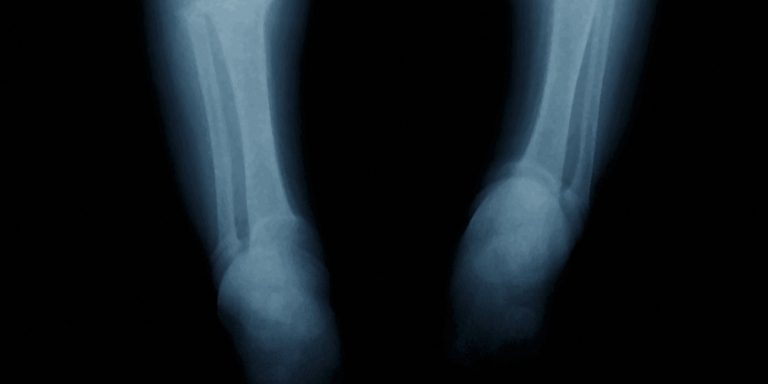
Ultragenyx Pharmaceutical Inc (NASDAQ:RARE) just announced that it has completed enrollment in its pivotal study of its lead rickets candidate, and given us an idea of when it expects to put out topline from the trial. This is a big step forward in the trial process (the condition is pretty rare so enrollment is not that easy) and marks the jumping of a hurdle that could have caused pre-authorization issues, but apparently hasn’t. With one on on topline, here’s our take on the drug in question, and a look at what we’re watching out for come data day.
First, let’s take a quick look at the drug. It’s called KRN23, and it’s targeting a particular subset of rickets patients that have a type called X-linked hypophosphatemic rickets. In normal rickets, the body doesn’t metabolize vitamin D (or if it does, it’s not particularly efficient at doing so) and this leads to a reduction in calcification in bones. This, in turn, translates to a weakness, brittleness and – by proxy – an increased chance of breaking. In X-linked hypophosphatemic, a mutation in a gene called the PHEX gene (located on the X chromosome, hence the X-linked element of the name) means hydroxylation of the vitamin D doesn’t take place to the degree it does in healthy patients, and it’s this that leads to the symptoms associated with the condition. The differentiator between the two types (and the driving force behind a need for the treatment that Ultragenyx is working on) is the non efficacy of a vitamin D regimen in patients. Rickets patients can help their condition by supplemental vitamin D. In patients with X-linked hypophosphatemic, increasing vitamin D intake doesn’t resolve the condition, and so alterantive treatment is required.
The current SOC in the space is oral phosphate, but this has a pretty weak efficacy rate and doesn’t cure the disease, just works to try and strengthen bones, or surgery if the bowing of the legs becomes severe.
KRN23 is what’s called a recombinant fully human monoclonal IgG1 antibody against the phosphaturic hormone fibroblast growth factor 23 (FGF23). Ignore all that for now – it sounds complicated but it’s not. In all of our bodies we’ve got FGF23, and it works to regulate vitamin D production by the kidney. KRN23 binds to the FGF23 hormone, and essentially jams it up, meaning it can’t down regulate vitamin D production. This – in turn – leads to an increase in vitamin D in patients with X-linked hypophosphatemic rickets. Simple.
Phase II data came out in support of this hypothesis, and phase I data showed the drug to be safe and tolerable. The ongoing phase III is attempting to bring it all together in more than 130 patients, and produce data that will form the base of a New Drug Application (NDA) next year.
So, how is the trial set up, and what are we looking for? It’s a double blind trial, with patients randomized 1:1 to receive either KRN23 or placebo. With 134 patients in the trial, this means 67 will get the drug and 67 will get placebo. The primary endpoint is a comparison between active and placebo groups for the change in serum phosphorus levels from baseline through 24 weeks. Serum phosphate is what mineralizes bones, so we are looking for an increase in serum phosphate across the period for the active arm. If we get this increase, and it’s statistically significant over the control arm, the endpoint will have been met and the trial a success.
There are a host of Secondaries, primarily related to symptoms – pain, stiffness, fatigue etc. – so we will also be keeping an eye on them as potential kickers for the marketing authorization.
We don’t know exactly when topline will hit – the company has only give an indication that it will be some point during 2017, but we know it’s a 24 week dosing and that the primary completion is slated for March, so we’re looking at Q2 as a guideline.




